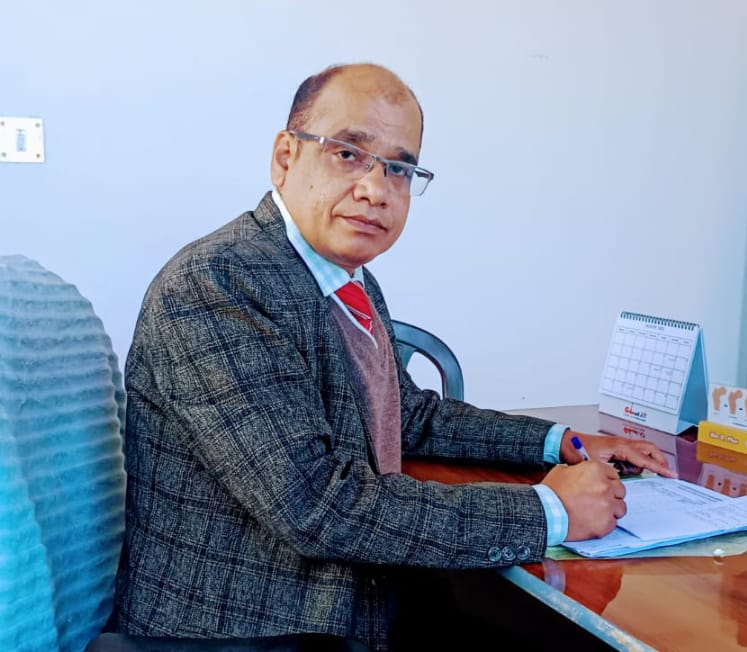

Prof. Dr. Satish Kumar Panda, MD (Ay), PhDPrincipal, Kritika Ayurvedic Medical College & Hospital, Bareilly, Uttar Pradesh.
(Based on Classical Ayurvedic Texts – Charak, Sushruta, Ashtanga Hridaya)
1. चिकित्सा चतुष्पाद (The Four Pillars of Treatment)
Successful treatment depends on four essential components, each with four qualities:
A. भिषक (Physician) (Charak Samhita Sutrasthana 9/6)
- दक्ष (Skillful) – Proficient in diagnosis & treatment.
- शास्त्रार्थ (Knowledgeable) – Well-versed in Ayurvedic texts.
- दृष्टकर्म (Experienced) – Hands-on clinical practice.
- शुचि (Pure) – Ethical, clean in body, speech, and mind.
B. द्रव्य (Medicine) (Ashtanga Hridaya Sutrasthana 1/27)
- बहुकल्प (Versatile) – Available in multiple forms (decoction, powder, tablet).
- बहुगुण (Multifunctional) – Has multiple therapeutic properties.
- सम्पन्न (Potent) – High efficacy & purity.
- योग्य (Suitable) – Matches the disease & patient’s condition.
C. परिचारक (Attendant/Nurse) (Sushruta Samhita Sutrasthana 34/8)
- अनुरक्त (Devoted) – Compassionate towards the patient.
- शुचि (Clean) – Maintains hygiene.
- दक्ष (Skilled) – Proficient in nursing procedures.
- बुद्धिमान् (Intelligent) – Observant & quick to respond.
D. रोगी (Patient) (Charak Samhita Vimanasthana 8/94)
- आधेय (Affording) – Capable of bearing treatment costs.
- आज्ञाकारी (Obedient) – Follows physician’s advice.
- ज्ञापक (Expressive) – Clearly explains symptoms.
- सत्ववान् (Courageous) – Mentally strong & determined.
2. चिकित्स्य पुरुष (Treatable Patient)
- Defined as a living being composed of:
- एकधातुज (Pure consciousness – Atma)
- षड्धातुज (5 Mahabhutas + consciousness)
- चतुर्विंशति तत्वात्मक (24 elements: 5 Mahabhutas, 5 Tanmatras, 10 Indriyas, Manas, Buddhi, Ahamkara)
3. अचिकित्स्य पुरुष (Untreatable Patient) (Charak Samhita Sutrasthana 10/8)
Patients who should not be treated due to poor prognosis:
- अनपवाद प्रतीकार – Non-compliant to treatment.
- अधन – Cannot afford treatment.
- अपरिचारक – No caretaker/nurse.
- वैद्यमानिन – Arrogant, self-proclaimed doctors.
- बण्ड – Violent or aggressive.
- असूयक – Cynical/envious of physician.
- तीव्र धर्म अरुचि – Disbeliever in ethics/dharma.
- अतिक्षीण मांस-रक्त – Extremely emaciated.
- असाध्य रोगोपहत – Incurable disease (e.g., advanced cancer).
- मुमुर्षु लिंगान्वित – Showing signs of impending death (Arishta Lakshana).
Why? Treating such patients leads to failure, harming the physician’s reputation and karma.
4. Key Ayurvedic Principles for Diagnosis & Treatment
A. त्रिदोष सिद्धांत (Three Dosha Theory)
- वात (Air + Space) – Movement, nerve impulses.
- पित्त (Fire + Water) – Digestion, metabolism.
- कफ (Water + Earth) – Structure, lubrication.
Imbalance → Disease | Balance → Health
B. षड्क्रियाकाल (Six Stages of Disease Progression)
- संचय (Accumulation) – Dosha builds up in its main site.
- प्रकोप (Aggravation) – Dosha becomes excessive.
- प्रसार (Spread) – Moves to other tissues.
- स्थानसंश्रय (Localization) – Settles in weak tissues.
- व्यक्त (Manifestation) – Symptoms appear.
- भेद (Complications) – Chronic/incurable stage.
Early treatment (Stage 1-3) is easiest!
